To celebrate American Archives Month in October 2010, the Aviation Safety and Security Archives (ASASA) and the Library's Special Collections collaborated on a display in the Hazy Library highlighting some items from the collections. To complement the physical display in the Library, this virtual exhibit provides more information on items from the display as well as highlights some additional items that are not in the Library display.
ASASA
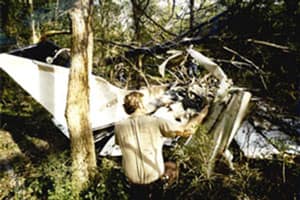
The Aviation Safety and Security Archives has investigation case files on hundreds of accidents. These case files — from the papers of David S. Hall, David Haddon Holladay, S. Harry Robertson and Richard G. Snyder — provide information that helps us learn valuable lessons from aircraft accidents to help prevent future accidents. The case files also offer valuable insight into the investigative process and the methods used by these accident investigators.
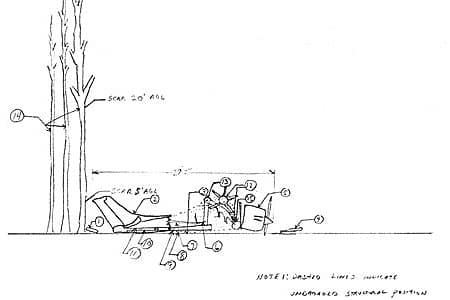
One of the case files in the David S. Hall papers focuses on a Cessna 210 accident that occurred in Riesel, Texas, on April 1, 1985.
Investigators at the scene found that the aircraft had impacted trees and suffered a significant post-impact fire.
In addition to photographs of the crash site, sketches of the wreckage distribution were made to document what investigators found at the site.
The probable cause of the accident was found to be engine failure due to oil starvation following an engine overhaul.
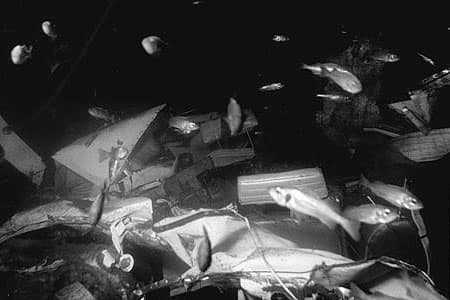
In addition to accident investigation case files, the Aviation Safety and Security Archives has resources that focus on the accident investigation process, including the challenges that investigators may face because of the accident location or other factors.
One example of these challenges is an investigation of an accident where the wreckage is underwater, as illustrated in this image from the David Haddon Holladay Papers.
On Aug. 1, 1964, a Cessna 310-H crashed into the ocean near Manhattan Beach, California. The pilot had reported instrument loss prior to the crash.
The NTSB investigation did not recover the wreckage. A subsequent investigation conducted by David Haddon Holladay retrieved major portions of the wreckage for further examination.
This diagram shows the position of the aircraft on the ocean floor as described by divers. The right wing and empennage were not located.
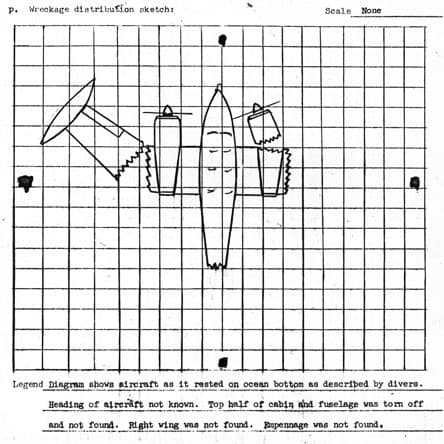
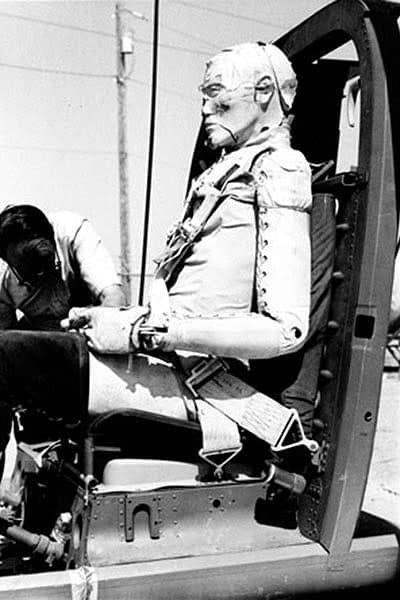
Many of the safety scientists whose papers are in the Aviation Safety and Security Archives worked to improve the crashworthiness of aircraft in order to increase passenger protection from impact forces during an accident.
One example from the S. Harry Robertson Papers is the testing of experimental energy-absorbing seats developed by Bell Helicopter for the OH-58A helicopter. These tests were conducted in 1970-1971 by Robertson and others at Arizona State University's Engineering Research Center and were designed to assess the ability of the seats to protect occupants from high-vertical impact acceleration. The test program evaluated the dynamic performance of three seat designs: a newly designed experimental seat, the production OH-58A crew seat and a modification to the existing production seat design.
The test program used a Sierra Engineering Company anthropometric dummy to simulate the pilot and/or copilot. The 200 lb., six-foot tall dummy was designed to the anthropometry of a 95th percentile U.S. Air Force crewman based on data from a 1950 survey.
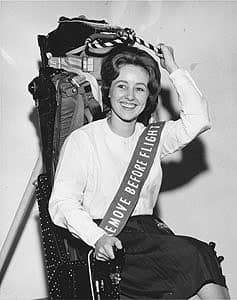
Many subject files on various aviation safety topics may be found in the Aviation Safety and Security Archives. Among these are the files in the C. O. Miller Papers about the Martin-Baker seat and ejection seats in general.
Publications in the ejection seat files include an article by Sir James Martin in which he relates his involvement and experiences in ejection seat design. The U.S. Air Forces in Europe published a pamphlet — simply titled "Eject! "— that brought together selected articles about egress and ejection equipment in order to provide a handy reference for aircrew.
The Martin-Baker seat was also the subject of numerous cartoons and other humorous treatments, like the photo above.
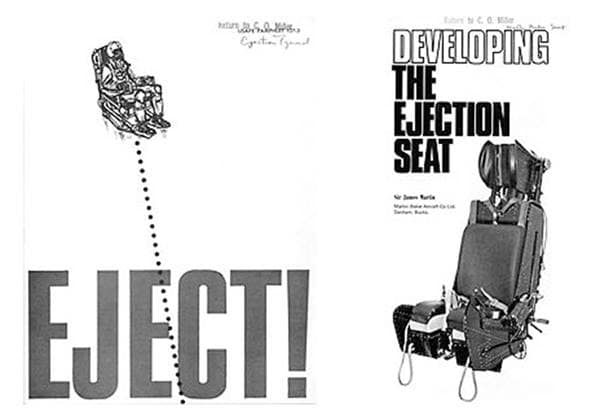
In addition to its collections of the papers of leading figures in aviation safety, the Aviation Safety and Security Archives also holds many publications on aviation safety, aviation accidents and accident investigation.
These pages come from a booklet titled "Ten Easy Ways of Breaking Your Bones in a Private Aircraft Accident," part of the Aviation Research Collection in the Archives.
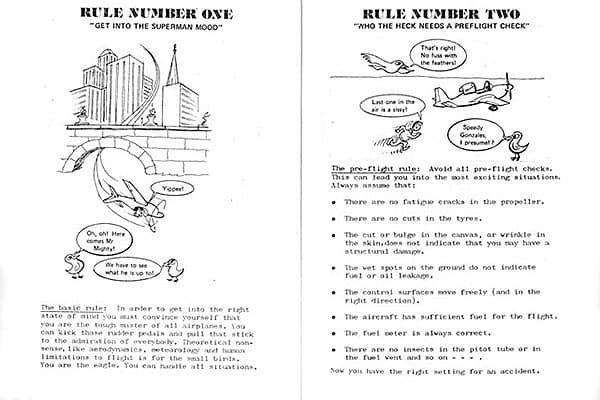
Special Collections
The Prescott Campus History Collection, part of the Hazy Library's Special Collections, chronicles the history, development and activities of Embry-Riddle's western campus.
Highlights of the collection include student publications such as The Echo yearbook (first published in 1982) as well as student newspapers.
The following extract from a 1980 issue of The Pioneer (predecessor to today's Horizons) focuses on a mid-air collision that occurred over Prescott's Love Field in the days before the airport had a control tower. Fortunately, both planes were able to land safely, and no one was injured.
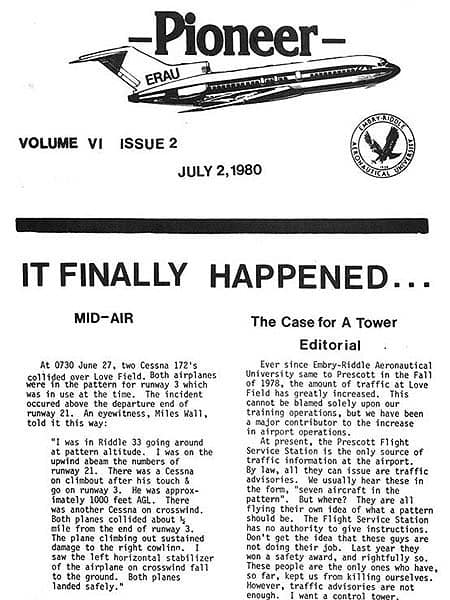
The Prescott Campus History Collection in the Hazy Library's Special Collections also has memorabilia such as the annual scrapbooks from the Golden Eagles Flight Team.
One highlight of the 1987-1988 Golden Eagles scrapbook is the section about the regional SAFECON competition, which Embry-Riddle hosted at Prescott's Ernest A. Love Field.
Photographs and captions in the scrapbook tell the story of the Golden Eagles' involvement as hosts of the event and also gives glimpses into the Golden Eagle's experience as participants in the competition.
The Golden Eagles came out at the top of the competition results and were also lauded for their excellent performance as event hosts.
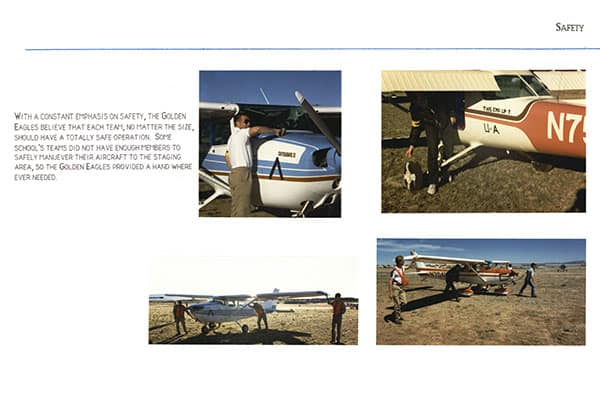
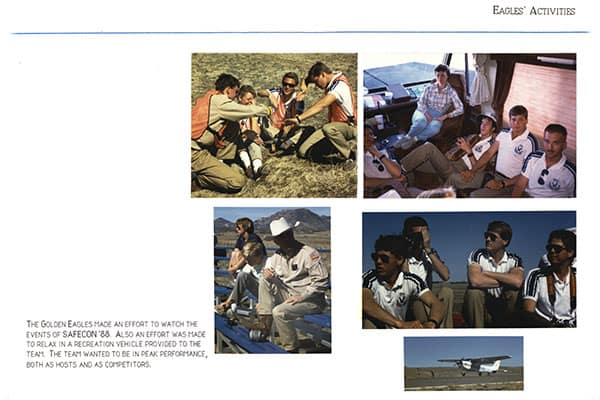
Another collection that can be found in the Hazy Library's Special Collections is the Aviation and Aerospace History Collection. Library visitors perusing the historic aviation magazines in the collection will find snippets of Embry-Riddle history in advertisements, photographs and articles.
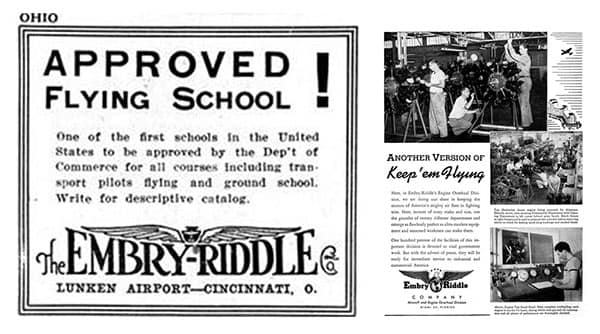
Advertisement (left) for the Embry-Riddle Company's flight school at Lunken Airport in Cincinnati (Photo: Aero Digest, September 1929), and an advertisement (right) about Embry-Riddle's work to support the war effort during World War II. (Photo: Aero Digest, January 15, 1944)
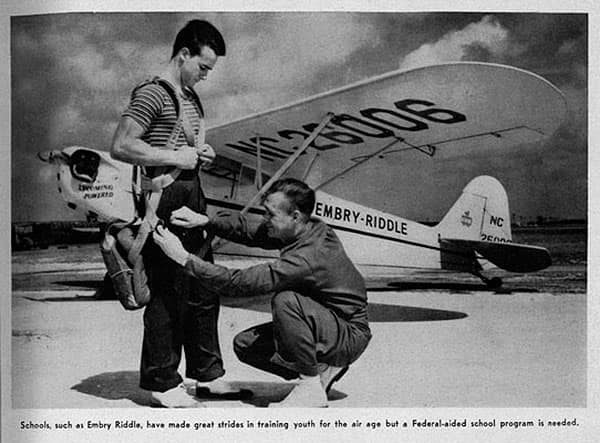
Illustration from "Give America's Youth Aviation Education" by Congressman Henry J. Latham, who advocated creating aviation education programs in all public schools. (Photo: Flying, March 1952)
Among the holdings that make up the Aviation and Aerospace History Collection in the Hazy Library's Special Collections are the papers of World War II aviator Joseph F. Mullen (1921-1977).
Following his flight training, Mullen was assigned to the 80th Fighter Group (known as the "Burma Banshees"), which was stationed in India and supported Allied ground operations in Burma. Mullen flew 128 combat missions during 1943-1944.
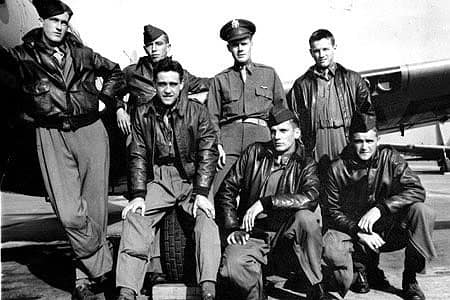
Lieutenant Stromborn with flight students at Shaw Field, Sumter, South Carolina, January 23, 1943. Pictured (l-r) are Joseph F. Mullen (Massachusetts), D. P. Morgan (Delaware), R. H. Mullineaux (New York), 2nd. Lt. Stromborn (Massachusetts), J. R. Morgan (New Jersey), J. F. Mitchell (Massachusetts) and Gordon Bennett (Massachusetts).
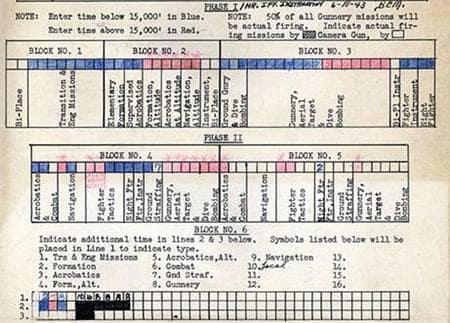
A portion of Lt. Joseph Mullen's "Pilot's Progress Card" documenting his P-40 training at the Air Corps Advanced Flying School at Craig Field, Selma, Alabama.
Historic publications make up the core of the Aviation and Aerospace History Collection in the Hazy Library's Special Collections. These publications document the rich history of human flight from ballooning in the 19th century to modern aircraft.
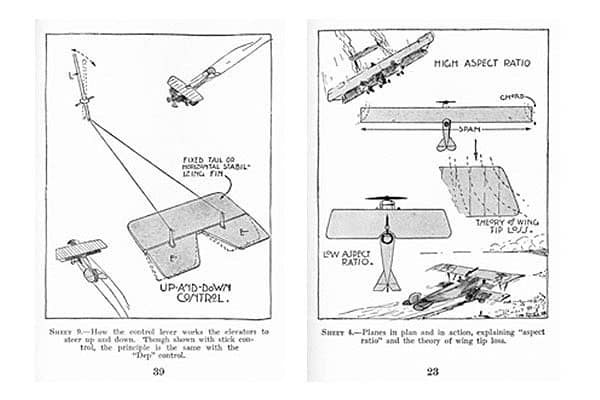
Illustrations from the 1917 book “Acquiring Wings: A Text on the Basic Principles Governing the Design and Operation of Modern Aircraft” by William B. Stout.
Contact Us
Robertson Aviation Safety Center II (Building 22)
Prescott, Arizona 86301
